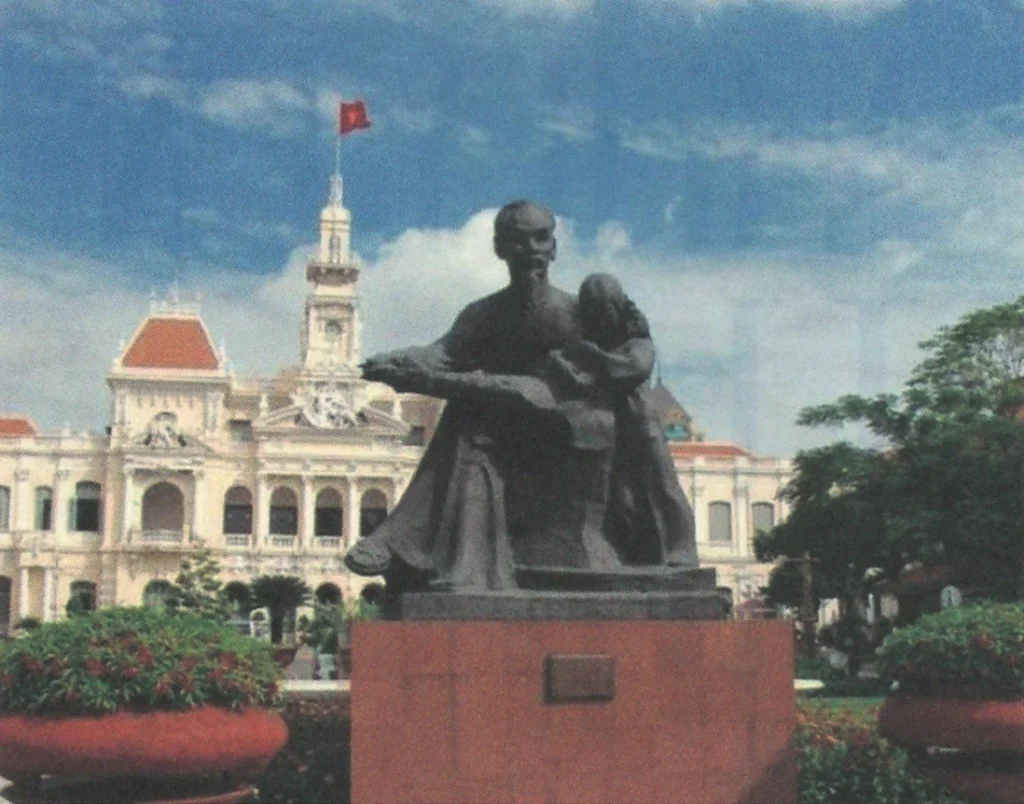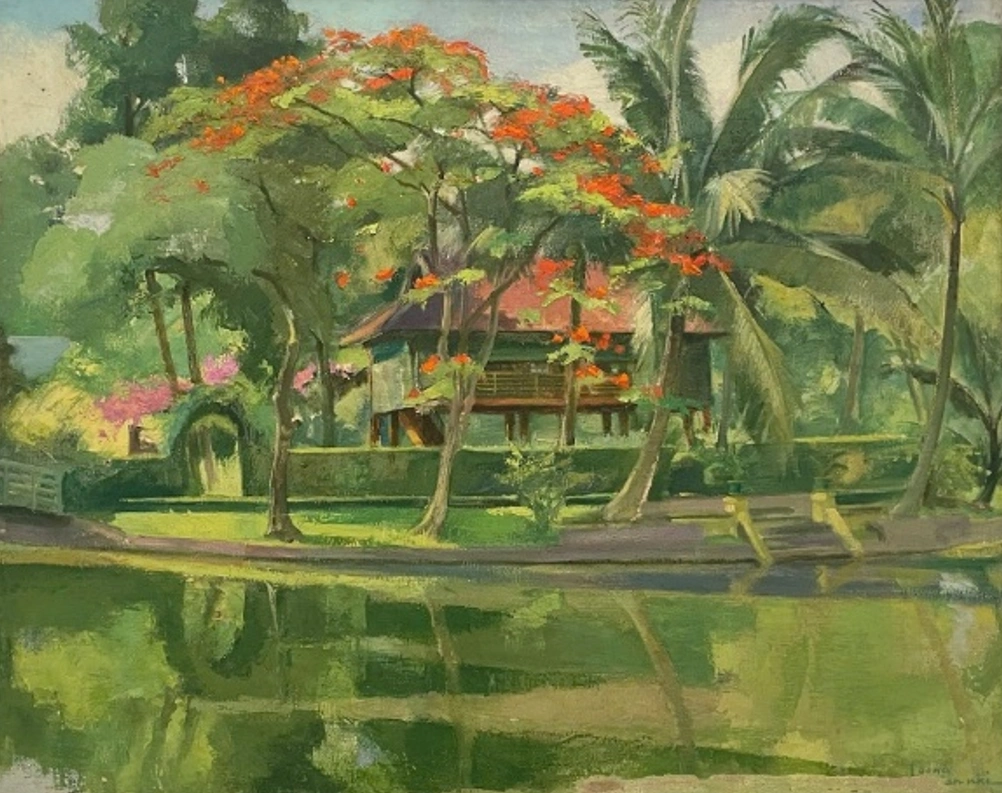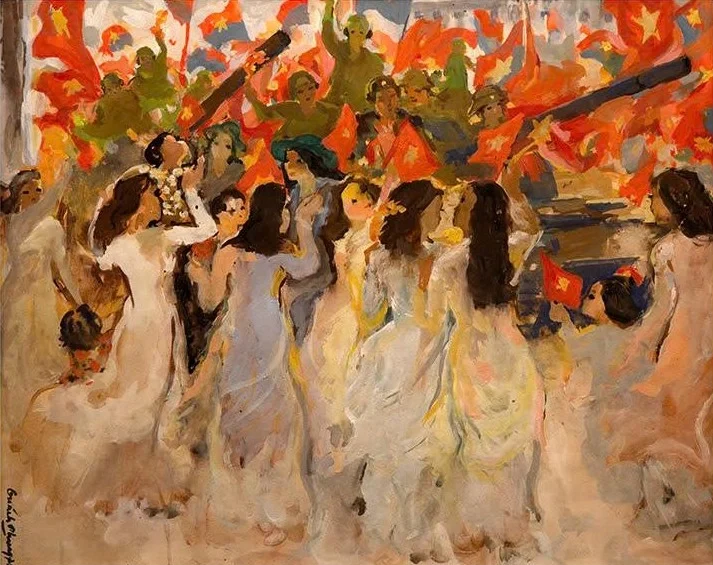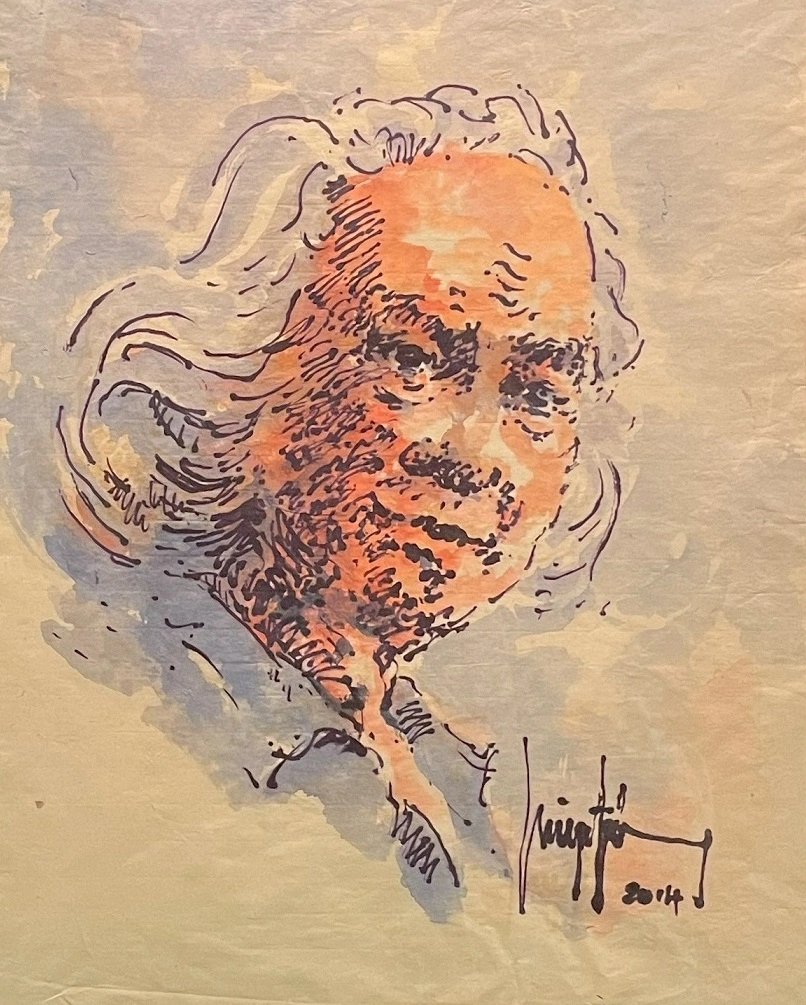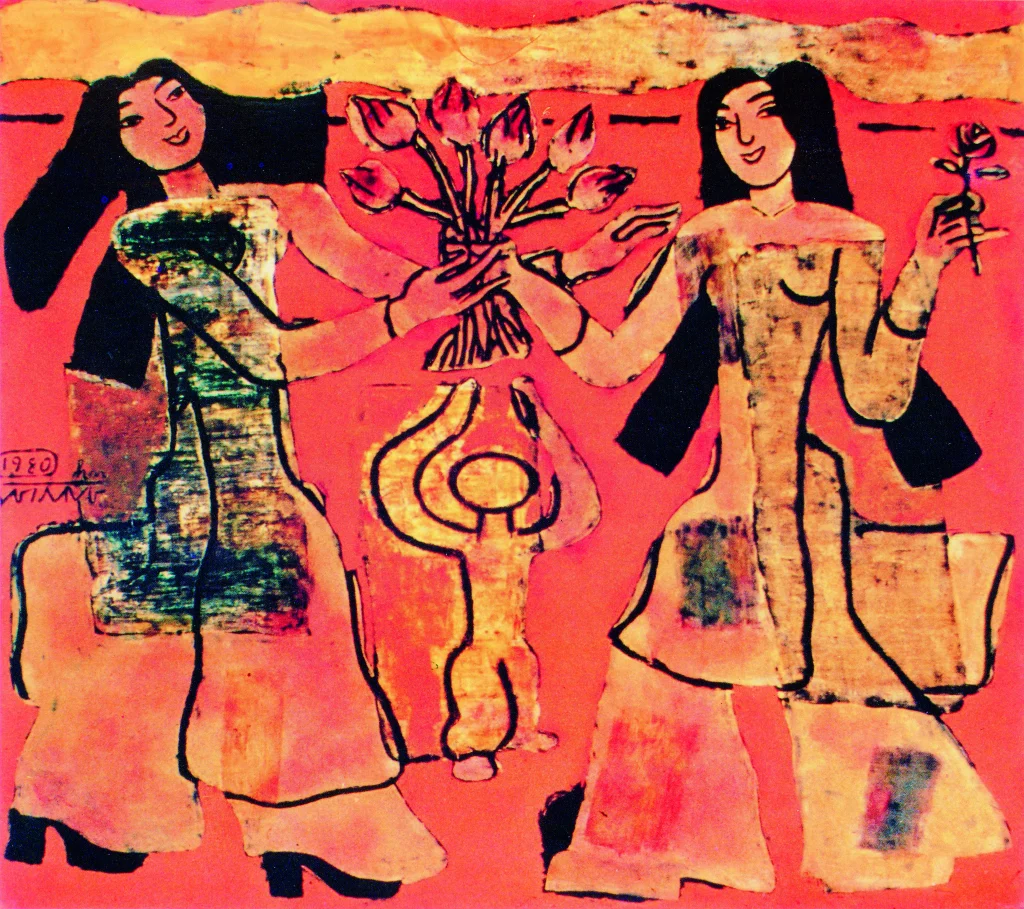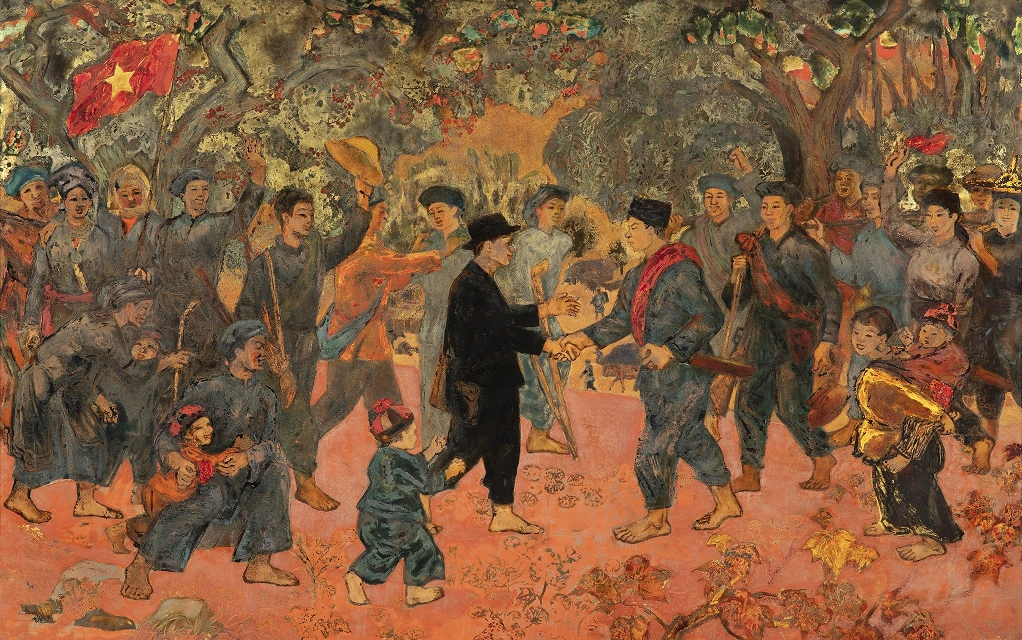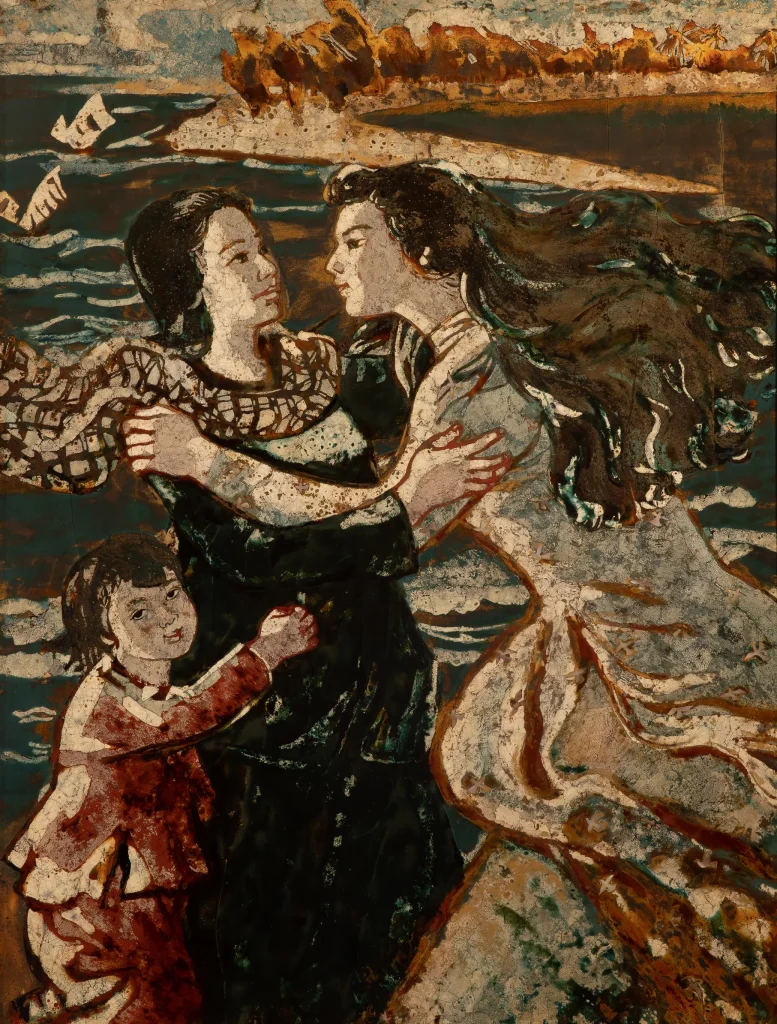
NGUYỄN VĂN TỴ, ‘NORTH AND SOUTH, ONE HOME’, LACQUER
Remember the time painting the work ‘North and South, one home’, I recall the trips to paint the border area in the years 59-60. At that time, the situation in the border area was tense because Diệm regime launched an anti-communist campaign. They placed guillotines everywhere to terrorize our people and persecute officers. They set up loudspeakers along the southern bank of Hiền Lương River, constantly detracted the North all day long. On the northern bank, we still fought calmly, using arguments to persuade the puppet soldiers stationed close to the southern bank. I went to paint with some of my brothers from the Fine Arts School, all the way from Cửa Tùng to Vĩnh Quang, Vĩnh Sơn, Vĩnh Thủy, Vĩnh Thái… The southern bank was deserted, except for the puppet soldiers stationed on the sandbank on the other side of Cửa Tùng or on the southern bank of Hiền Lương Bridge. It was here, at both ends of Hiền Lương Bridge, that scenes of separation and reunion took place at night or early in the morning. Children saw off their fathers, wives saw off their husbands, mothers met their children, sisters met their brothers. On the afternoons before Lunar New Year, these meetings were even more emotional. There were puppet soldiers who deliberately prevented people from crossing the bridge, but before the scene of the meeting filled with affection, they could not help but be moved, standing and watching the family reunite even for a moment.
Only those who had suffered the pain of separation, in their country, could fully understand the joy, the happy moments in the tears of mothers crossing the border to meet their children, wives to meet their husbands, sisters to meet their brothers… in just ten or fifteen minutes on the 30th of Tết. Yet before and after the 60s, this happened right in our country, right on both banks of a river, at the end of Hiền Lương Bridge, in Vĩnh Sơn village. This village was split in two, half on the South bank, half on the North bank. The red flags with yellow stars still flew high in the sky of the North bank, this flag was lowered every month, patched or replaced with a new cloth once. The national flag, the revolutionary flag, still flutters in the wind, regardless of wind, rain, and storms. The red flag is the faith, the pride, the loyalty of the people on the South bank of Bến Hải when standing before the guns and knives of the enemy, while they are trying to denounce the communists, searching, arresting and torturing our officers and people.
After the trip to the commune, we returned to Hồ Xá Information Department. The comrades at the Department said that they needed to draw large-scale paintings on the theme of North-South affection, about the struggle to stop the bloodthirsty Americans and Diệm on the South bank. We sketched and painted in color the brothers and sisters who had families on the South bank, whose husbands and brothers worked there. We studied the figures of the characters, Ms. M – a tailor in Hồ Xá whose husband worked on the other side of the river, Mr. S – a fisherman in Di Loan, Mr. T – a secret guerrilla in Cửa Tùng. They told about the story of the brutality of the Americans and Diệm regime on the South bank, about the perseverance and persuasion of our officers, about the moments of meeting, meeting the husbands, meeting the children, meeting brothers and sisters on the other side of the border.
We sketched two large propaganda paintings, over 10 meters high, on the North bank of Vĩnh Sơn village with the words: Unify the country, North and South are one home and stop the hands of the Americans and Diệm. Previously, Vĩnh Sơn village had a market on the South bank, which also belonged to the North bank, and people still crossed the river to go to the market to buy and sell. Now, although the village has been divided into two, so the people on the South bank are forbidden to go to the river bank, people still wait for the market day, sneaking behind bamboo bushes and trees to look to the North bank to find relatives, even though they could only see from a distance of two or three hundred meters. The paintings we sketched were to meet that need of trust and affection on both banks, to meet the need to fight to stop the bloody hands of the Americans and Diệm on the South bank.
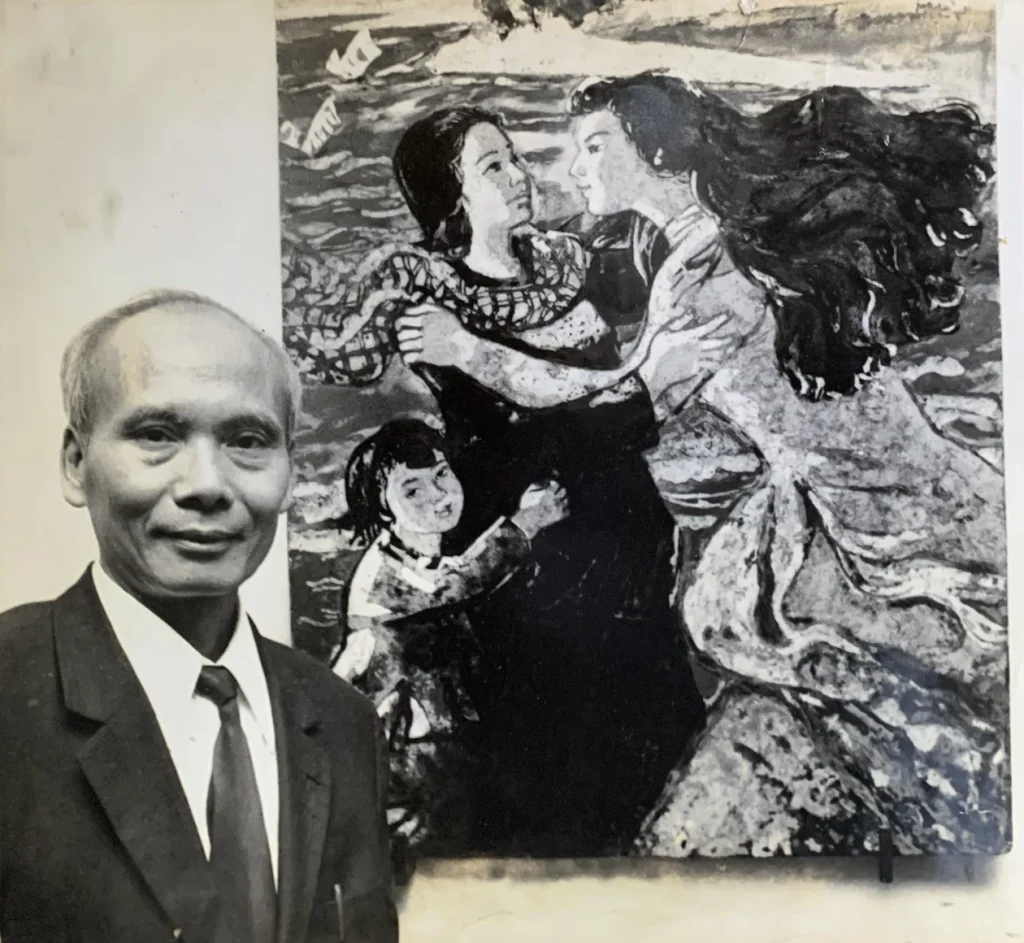
With deep memories of the trip, back at the studio I reconstructed the painting about the emotional content of the North-South meeting between the people on both banks who were from the same commune, the same province, and the same nation. I transferred the character to a lacquer painting, enhanced the generality, used the most primitive materials to describe the character’s appearance: eggshells, pearl shells for light and dark, floral shirts with solid black outlines. The girl symbolizing the North starting to build Socialism has a happier face, in a rather splendid floral shirt, the Southern woman is gentle and full of affection. The mother wears a brown shirt, the innocent child clings to the mother’s shirt, witnessing a meeting that is both lyrical and tragic. The scene is right on the northern bank of Cửa Tùng, behind is a long sandbank in front of a row of poplar trees in Giao Linh district. That scene is very familiar to the Cửa Tùng people in Di Loan, Hồ Xá, Vĩnh Sơn, where there are daily secret meetings between relatives on both banks. The painting was completed in 1963. The light and dark of the painting are expressed by eggshells, typically taking black and white as the main image on a blue sea background, the silver waves are also attached by eggshells. The bright yellow strokes on the girl’s shirt, on the row of poplar trees on the southern bank blend into the sea of clouds, waves and storms.
I wanted the characters and the background of the painting to be consistent with the life of struggle at that time and to evoke a bright future of national reunification. My affection at that time when looking at the country on both banks were like that. Partly happy, partly calm and thoughtful. Happy because no matter how brutally the enemy divided the country, the sisters of the North and the South would still meet each other, the North and the South were still one family. Thoughtful because of the inevitable losses, because of the pain of separation of each person, each family of the entire nation.
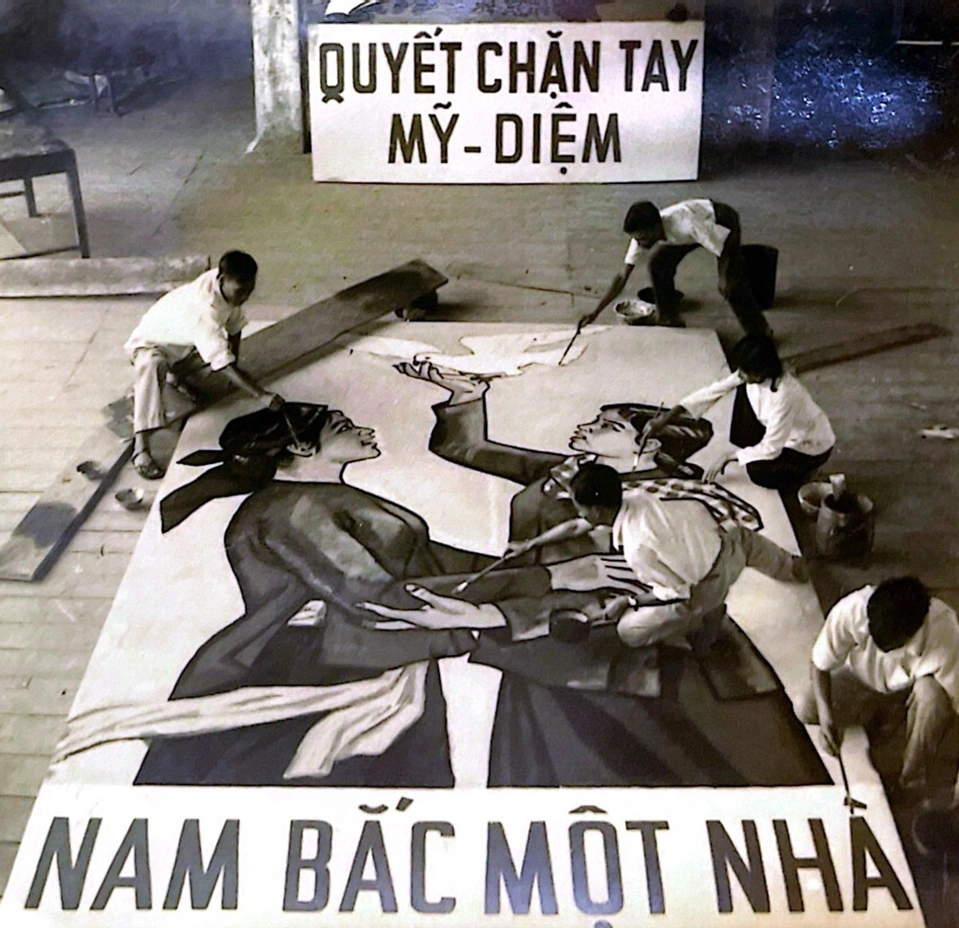
It was also fifteen years later, from the day I painted the lacquer painting ‘North and South, one home’, that the emotions and characters were fully realized in the joy of total victory. This time I witnessed reunions after twenty or thirty years of separation, this time right on the southern land of the Fatherland. Full of tears and happiness like that. That happiness during the joyful days of reunification was also my joy, the artist who shared joys and sorrows, shared hardships with the people in the revolution to liberate the nation and build socialism.
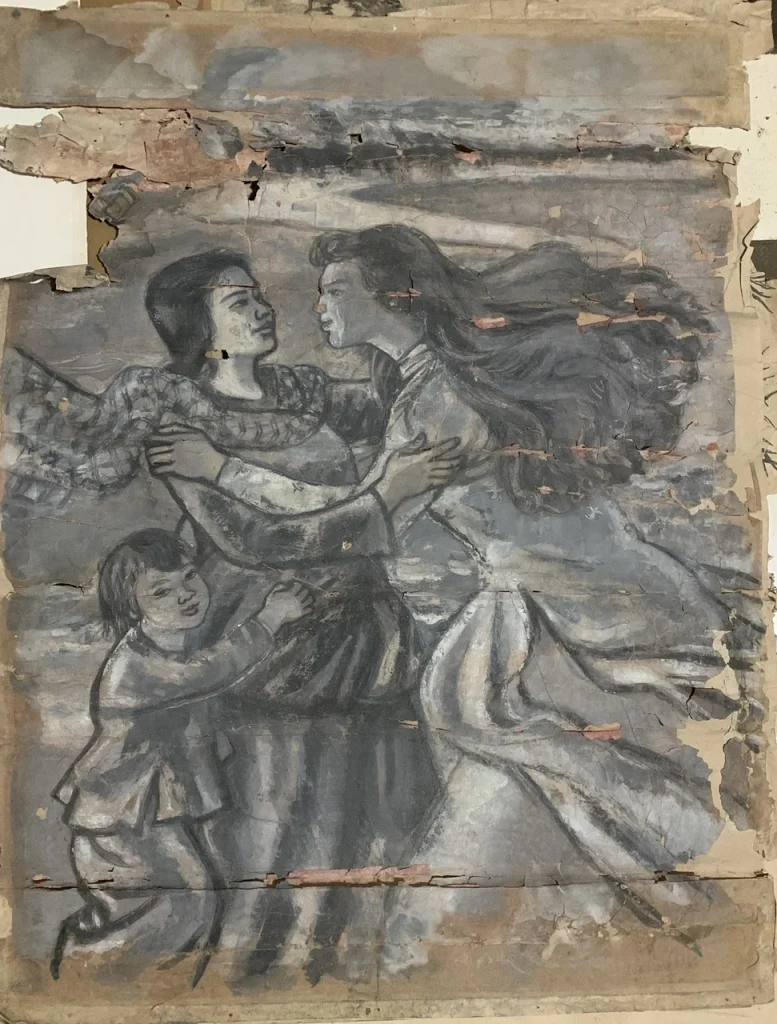
19 – 8 – 1976
NGUYỄN VĂN TỴ


